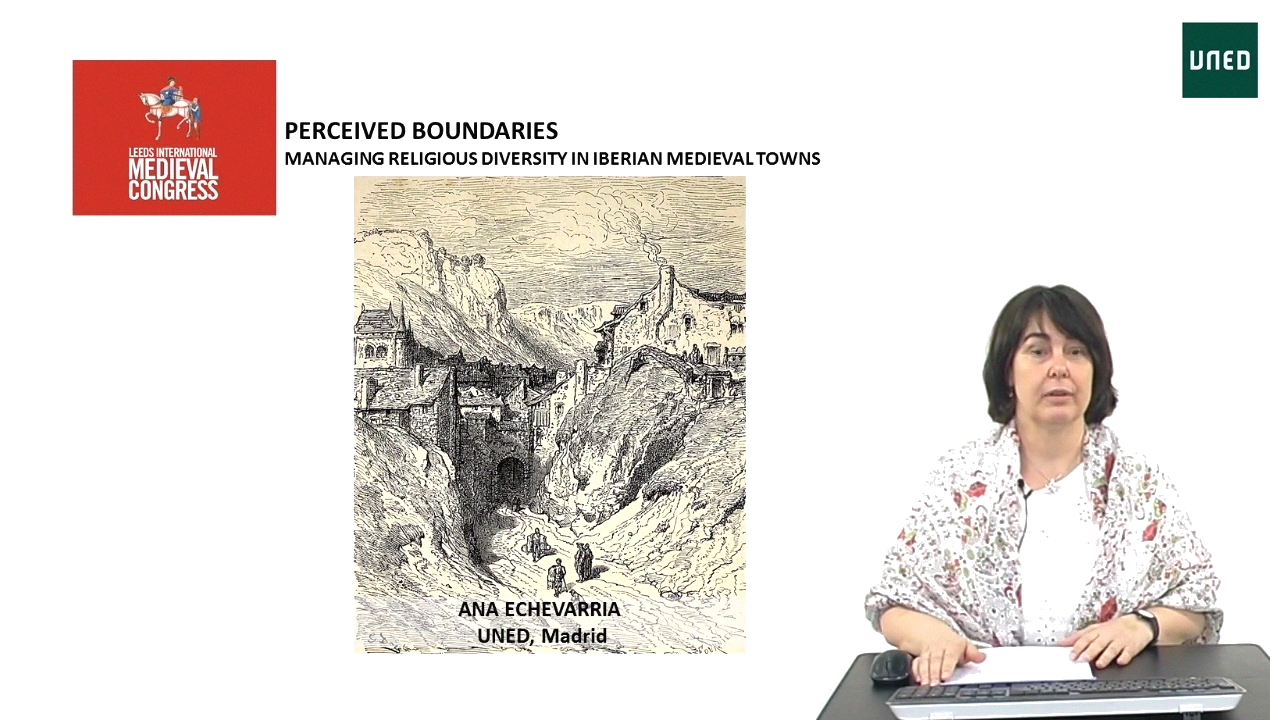Perceived Boundaries: Managing Religious Diversity In Iberian Medieval Towns
This lecture explores issues of urban boundaries, both physical and socio-religious. Residence in towns in the Iberian kingdoms could vary from side-by-side housing to separate neighbourhoods based in real or imagined boundaries. Mudejars in Castile had the possibility to build new mosques, breaking canon and local laws, whereas in Aragon, Jewish communities paid for their right to rebuild synagogues continuously. Invisibility was as a very important tool to marginalize groups that were perceived as a possible threat, so the only requirement for these buildings was that they could not be set apart from surrounding houses. This strategy was combined with the opposite, as laws of style and dress codes applied categories of differentiation in order to make minorities recognizable and keep the delicate balance between the cultural particularities of the religious groups living in towns. Restrictions of visibility of minorities in Christian space included the inauguration of previously in existent secluded neighbourhoods in Northern Castilian towns. It has been long discussed whether Jewish and Muslim quarters were imposed by Christian authorities at the time of conquest - a phenomenon which is coherent in some cities of Andalusia, Valencia, and Murcia - or as a later development, encouraged by the minorities themselves, who found economic or organizational advantages, especially in times of turmoil. Common interest and reaction against the violation of the conditions of their status in the cities favored regular cooperation between Jews and Muslims in town matters, facing their Christian neighbours. But the balance was broken in Castile in 1480, when all Muslims and Jews were pushed into closed neighbourhoods that ensured the physical boundaries established by the new ideological trends. The geographical setting of these quarters contributed to the invisibility of the religious minorities, resulting in the long run in their exclusion of urban life.
-
Ana María Echevarría Arsuaga catedrática de Historia Medieval, UNEDJosé Luis de la Calle Muñoz realizador UNED Media, UNED
Archivos adjuntos


